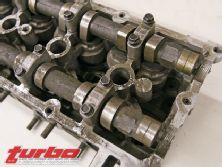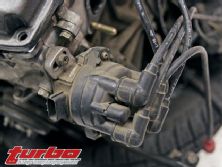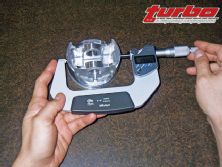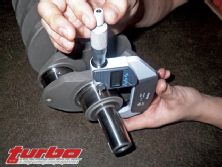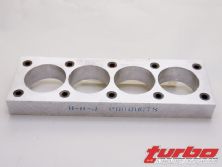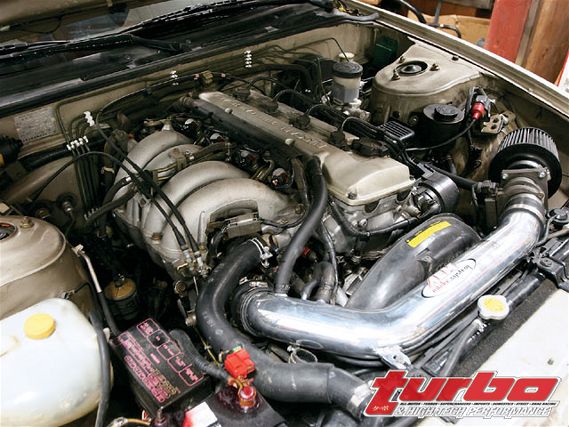 | Minus Zero To Super Hero: 750bhp Ka24de Buildup Part 1 - Garage.Tech
| Minus Zero To Super Hero: 750bhp Ka24de Buildup Part 1 - Garage.Tech
OK, you looked at the title and thought to yourself what!? We don't blame you. But engine build stories have been done over and over again. When you've been doing stories on engines for this long, it's hard to think of new ones to do. But what better to work with than the bastard child of Nissan motors. The KA24DE has been long neglected for the SR20DET and, more recently, the VQ35DE as an alternative powerplant for the S-chassis car. But there has always been a group of true believers in the KA. So in deciding on a new engine build series, we landed on using the KA24DE and sought out Naoto Negishi of NPD to aid with the build. Owning a 240SX for his first car (in 1994), he has been a longtime fan of the KA. He has always preached to us the power of the KA as we sat quietly chiding him along and comparing the "truck motor" to the more performance-orientated SR20DET. Naoto and his passion for all things KA24DE has been recently developing parts for the KA under his company NPD with some amazing results. Follow along as we begin our quest to eclipse the 700hp marker and take you through the build-up process and discuss how this project can be applied to your own motor build in the near future.
Our build will go into every aspect of the KA24DE engine-from the parts being used to addressing weaknesses in the motor. First, we will give an overview of the KA24DE, the bottom end parts we are going to be using and how to properly prep the stock bottom as it leaves for the machine shop. The overall target is 750 bhp at 8,000 rpm on the engine dyno. Yes, we know this sounds too good to be true but never say it can't be done in the world of high performance.
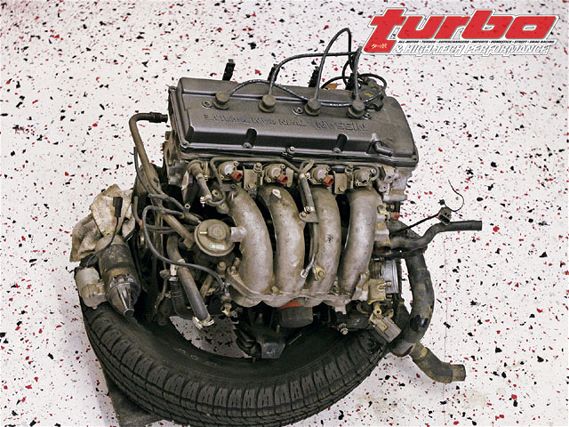 | In its stock form, this truck motor will be transformed into a 750bhp powerplant.
| In its stock form, this truck motor will be transformed into a 750bhp powerplant.
So, why a KA24DE? For starters, the155hp 2.4L engine comes in the USDM S13 and S14. The large number of Nissans running this engine plus the popularity of swaps (dumping in favor of a SR20DET), makes the engine readily available and cheap. You might say, "Honda SOHC D15B motors are plentiful too," but that doesn't make them good. While the single-cam Hondas are popular among diehard H-badge fanatics, they lack the 89mm stock bore like the KA24DE and cast-iron block and main caps that utilize a girdle design. So, out of the box, the KA24DE it is built to withstand some punishment. Before you jump to conclusions and ask yourself: "Besides a big engine what else is it good for?" The intake ports on the cylinder head are large from the factory and utilize a high-degree port angle. The valvetrain also utilizes a direct-bucket design. This means you don't have the problems of rockers popping out or failing like the SR20DET.
While we briefly covered the basics on why the KA24DE is an ideal candidate, we should also include the numerous issues associated with the motor. All in truth, if this was such a perfect motor everyone would be using it right? These sure are, but before we crank up the boost and try to peg the 750 marker we took the time to carefully analyze the engine and its downfalls starting with the bottom end. The cast pistons and weak rods were designed with no intention of taking any abuse. The media-type headgasket would definitely fall apart under any serious boost. The crankshaft is only half-counter balanced. The head bolts are a measly M10 (SR20DET is M12 and RB26DET is a M14).
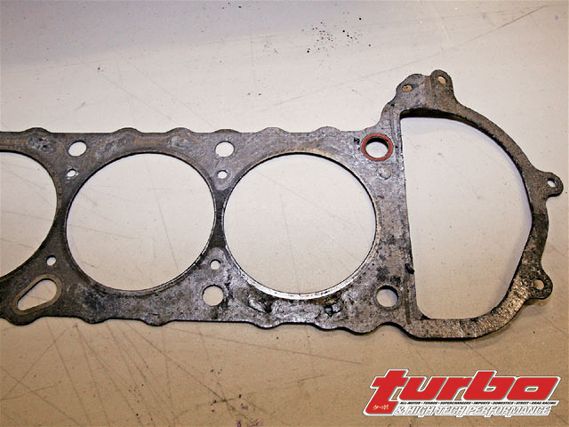 | The stock valvetrain utilizes a direct-bucket design, eliminating the rocker arm problems associated with SR20DET motors.
| The stock valvetrain utilizes a direct-bucket design, eliminating the rocker arm problems associated with SR20DET motors.
Although the intake ports are decent in terms of flow, the exhaust ports are the direct opposite. They're flow restrictive and don't have a very good port angle. The cam gears are so small that you cannot utilize a veneer-type adjustable cam gear (slides for adjustment); you can only use a knock-pin type (moves to lock in a permanent position).
Although the SR and RB engines all use a direct-ignition-type system, the KA still uses a distributor type. It's obvious that the motor was not designed with high performance in mind. So what can be done to transform this block of stone into David? Well to begin with we decided that it has to get turbocharged. To do this, however, we would have to make sure the block could withstand the type of power we would want to see.
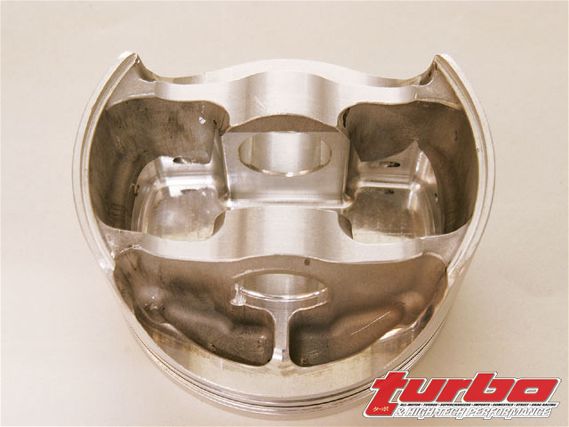 | Notice on NPD's piston the cutout section for the box-skirt design. This also dramatically reduces the size of the wrist pin.
| Notice on NPD's piston the cutout section for the box-skirt design. This also dramatically reduces the size of the wrist pin.
With nearly no aftermarket support for this engine, Naoto offered his KA24 wisdom and advice on what steps to take for the bottom-end build, starting with a set of his very own NPD-prototype KA24DE pistons. Their pistons are 90mm, 9.5:1 compression and made out of billet aluminum. NPD utilized a box-skirt design to cut back on the weight of the piston. Because of how long the stock stroke is (96mm) and our target rpm of 8,000, the overall piston speed would be high. NPD pistons were designed to reduce the overall rotating mass of the assembly, but keep the strength of the piston. Since the skirt is cut down, the pin is also shortened to save weight. NPD kept the piston at a 90mm bore in order to have ample piston ring selection.
The stock rods were tossed and replaced with a set of off-the-shelf BC Pro Series rods. In place of the half-counter stock crank, NPD has developed a fully countered billet crankshaft. The main and head bolts will be replaced with ARP studs from AMS. AMS developed an upgraded head stud, increasing the size to 11mm that requires machine work to the block and head. Any rotating parts that touch any metal surface will be WPC treated to reduce friction and improve overall strength. With this combination of parts, the engine should hold up to the extreme amount of power we'retrying to obtain.
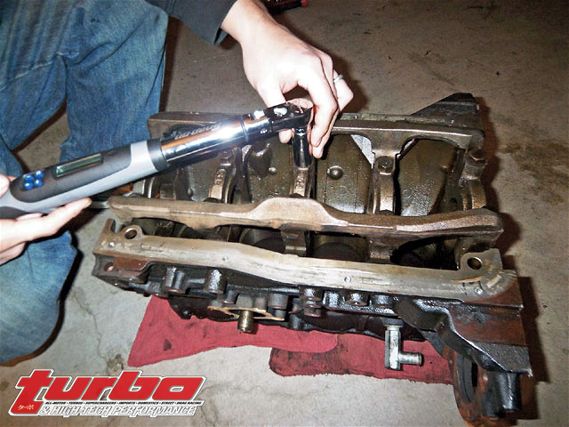 | NPD's crank in conjunction with BC rods ensures the reliability needed for making six times what stock outputs.
| NPD's crank in conjunction with BC rods ensures the reliability needed for making six times what stock outputs.
Now that you have an overall idea of what the build is about, let's get to work. The first thing to do is tear down the engine to inspect, because the majority of KA blocks have seen high mileage. Since the majority of machine shops hae trouble line-honing main journals, you should take the time to measure them for wear and out of roundness. It's better to make sure you have a good block than to spend the money to get a cylinder hone only to find out you need a line hone. With blocks like the KA, it's better to scrap the engine and try another block than risk having a machinist improperly line hone the main journals.
Naoto performs the procedure by first reapplying the proper torque to the main girdle, then checking each journal one by one with a bore gauge. Make sure you work in the correct degree of measurement.
The difference in bearing sizes is in the thousandths of a millimeter. (0.001mm is equal to 0.000039 of an inch) This means that if your machinist only works in thousandths on an inch, he will never be able to get the exact clearance you want; every step he takes he's moving is too large of an increment. Remember, you're paying them to do work for you. Do not accept anything less than what youasked for.
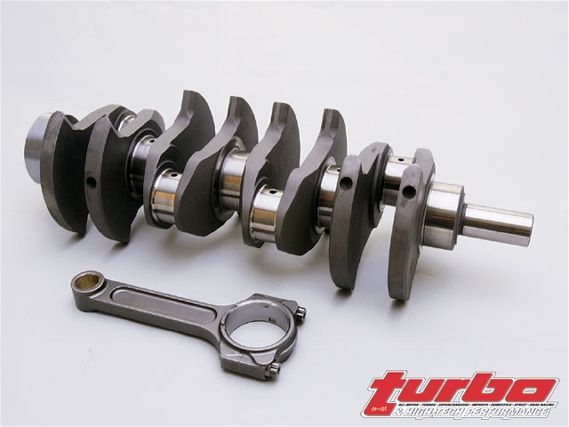 | Make sure to properly torque the main girdle, as small variances will show when working with such tight tolerances.
| Make sure to properly torque the main girdle, as small variances will show when working with such tight tolerances.
To get a good sample, Naoto takes a measurement at three different axis points: X, Y and Z. He then goes back and measures the crank. With both measurements in hand, he looks up the factory clearance and finds out if there is a suitable bearing that will fit. If you can't find a bearing that will fit what you have, then you can always take that chance and gamble at the machine shop or roll the dice at the junkyard with another block.
After determining that your block is good, you need to get an accurate measurement of your piston. One important tip that Naoto offers is to never leave the measurement responsibility up to the machinist. He takes accurate measurements of the pistons so that he can tell them what bore and finish he needs. We look up the piston clearance and add that into the size of the piston. Again, stress to your machinist that you want it to be accurate to the hundred thousandths of an inch or thousandths of a millimeter. Do not accept anything less.
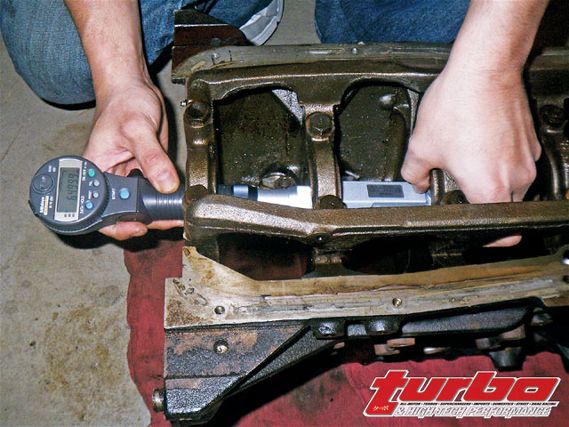 | Naoto recommends taking a good sample group and going back to recheck it to assure a good measurement. The gauges are checked for calibration after every journal to assure accuracy.
| Naoto recommends taking a good sample group and going back to recheck it to assure a good measurement. The gauges are checked for calibration after every journal to assure accuracy.
NPD also machined an aluminum torque plate made for the KA24. The torque plate simulates the stress of the cylinder head keeping the block assembly nice and tight while it is being machined. Without it, the center cylinders tend to come out more out of round thanthe outers.
Now that we know we have a good block and the exact bore size we need, we can send the block out to the machine shop. With the block, we sent the head studs as the block needs to be resized to run an 11mm stud, a headgasket and the torque plate for machining. We'll also be sending out many of the parts to WPC while the block is at the machine shop.
Stay tuned. In part two, we'll discuss the valvetrain and porting of the cylinder head.

